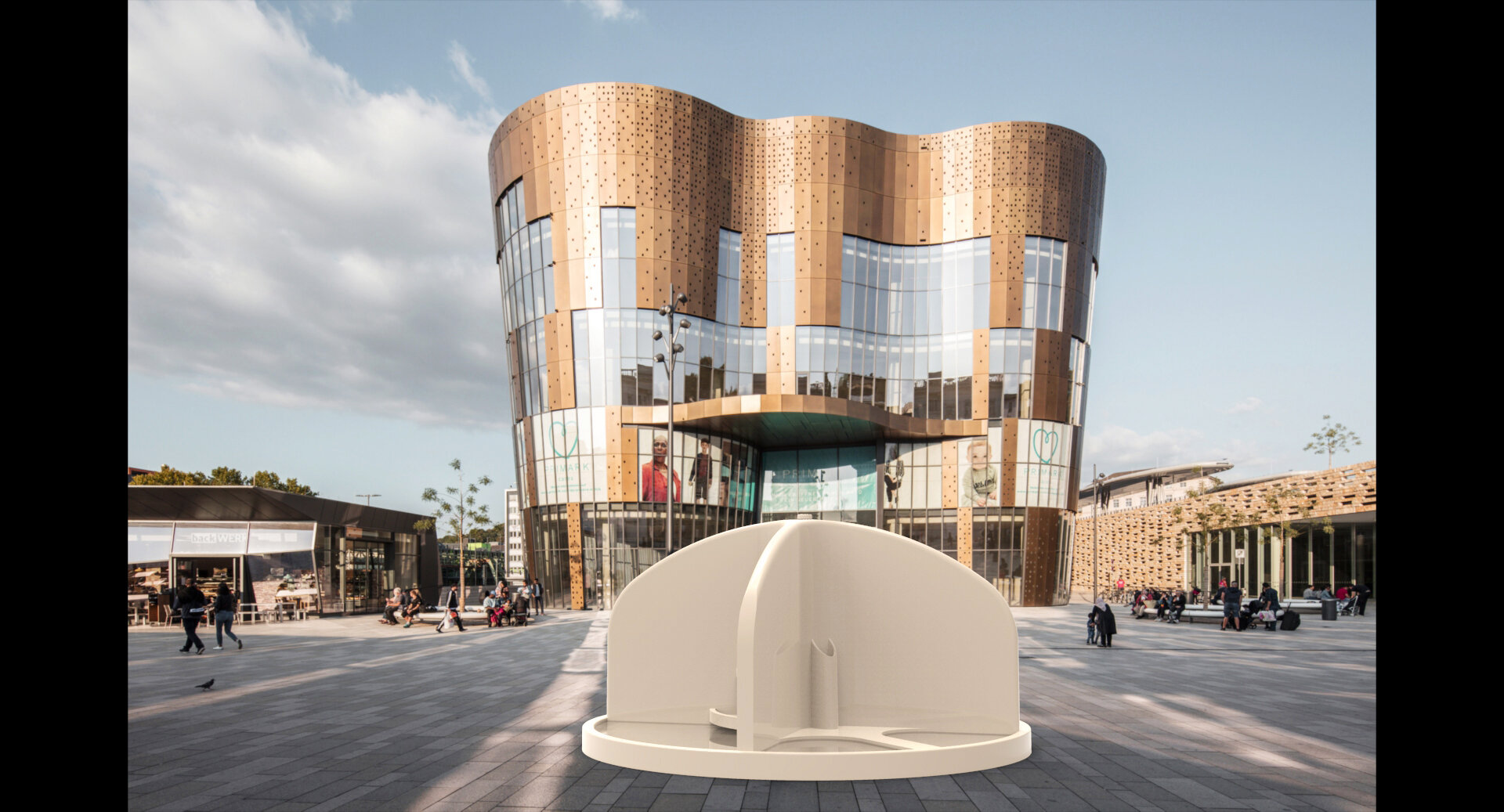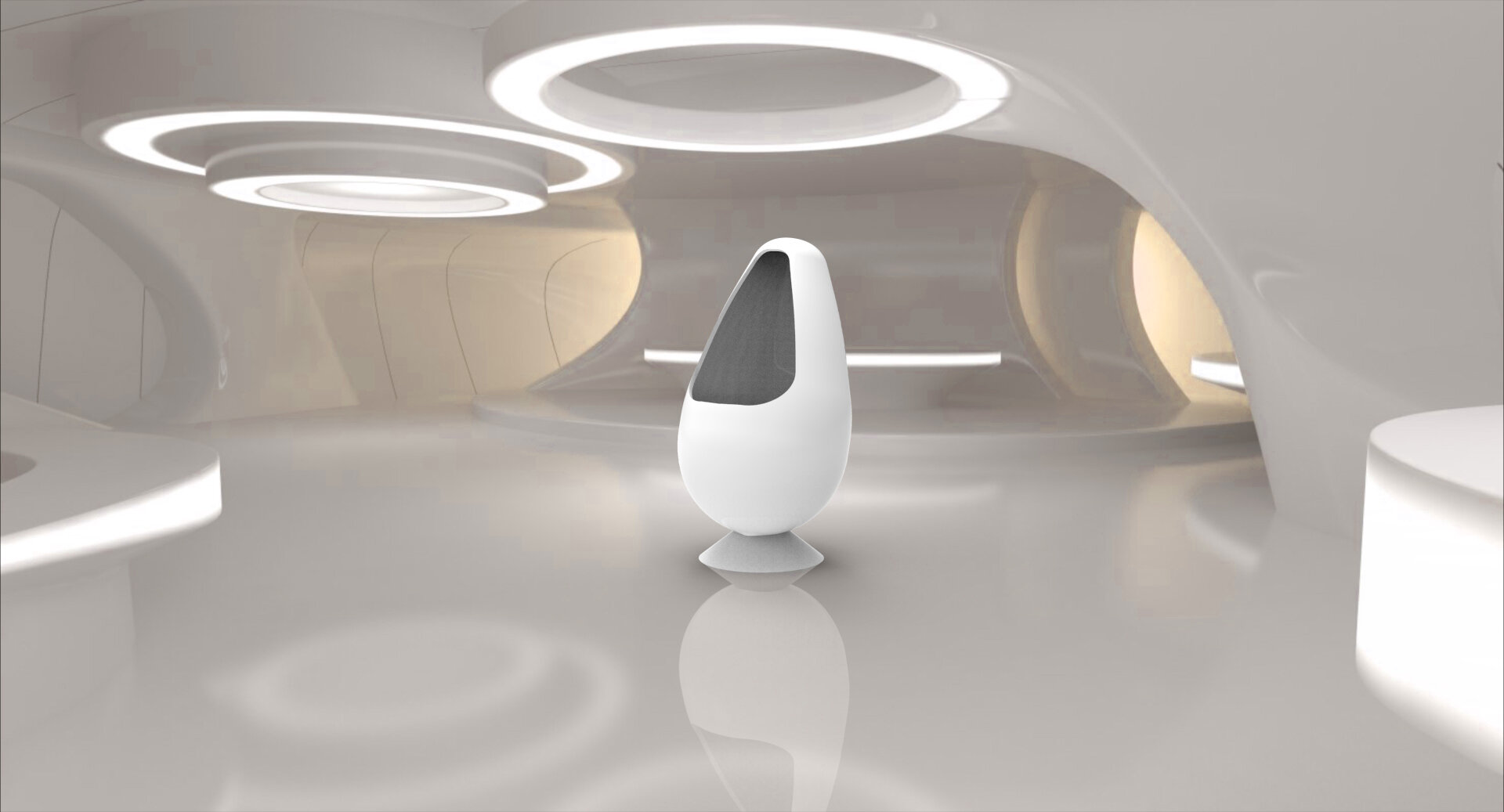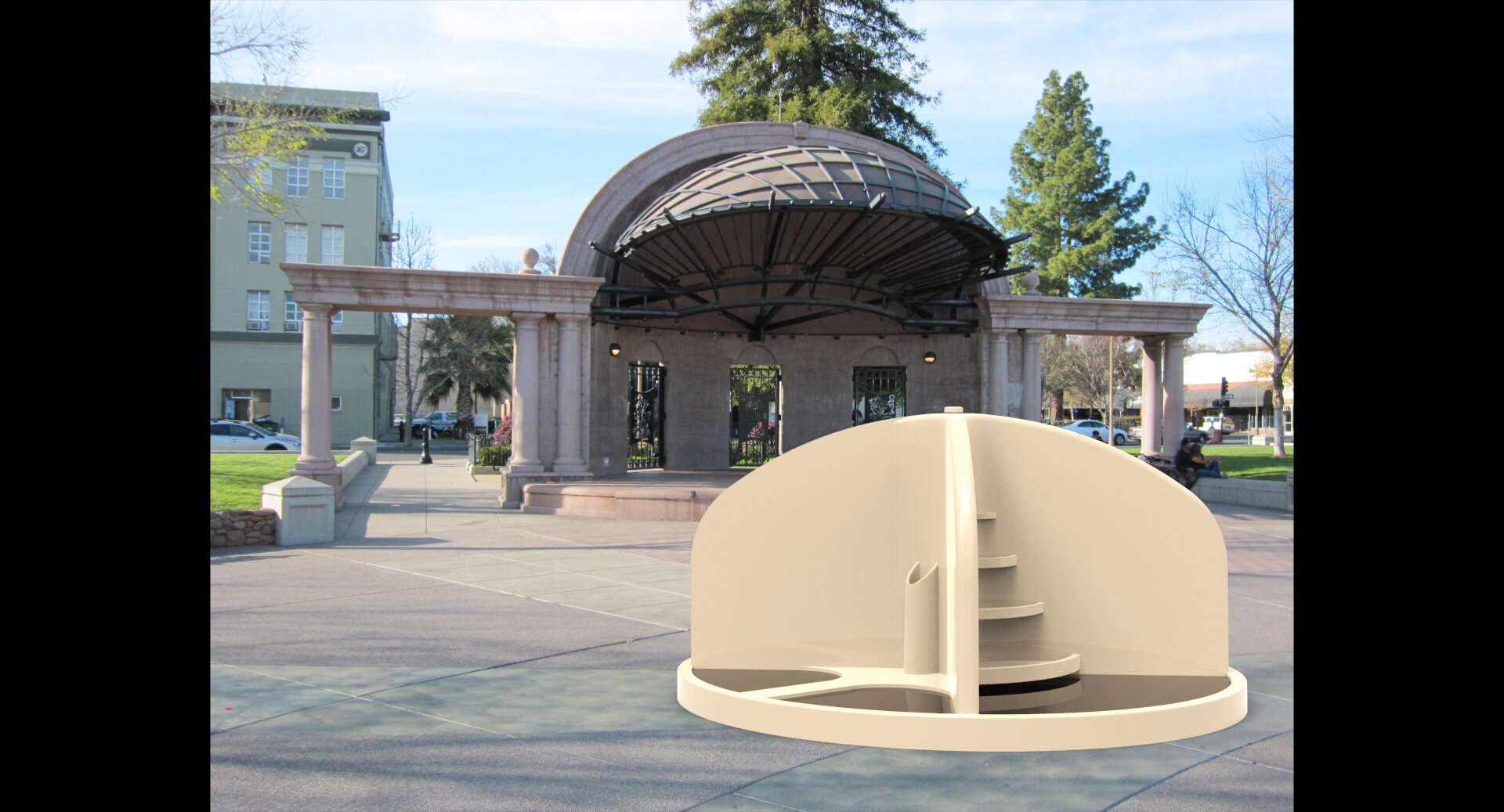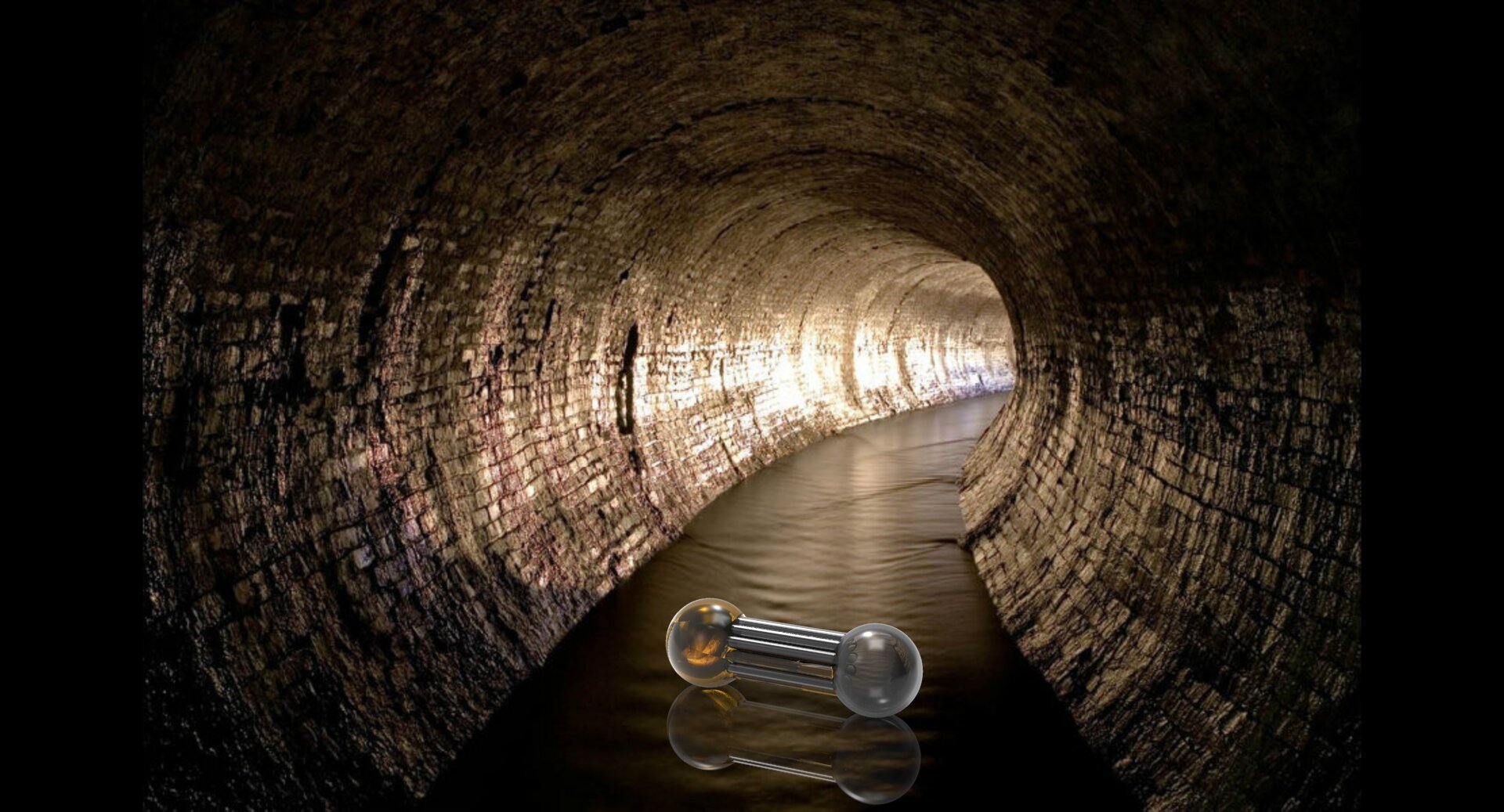Oasis
April - June 2019 | Design Academy Eindhoven
… a speculative urban oasis for a future where water has run out and humans resort to consuming their own byproducts to sustain society.
It is projected that by the year 2100, the number of megacities in the world will rise, with the population of the largest reaching up to 88 million. On the other hand, we are experiencing a mass extinction of species and the water crisis is reaching alarming thresholds in major cities across the world; Cape Town will be the first to indefinitely shut off their fresh water supply, leaving four million people without running water. They’d instead get water rations and have to line up in city stations to get it. Sao Paolo, Melbourne, Jakarta, London, Beijing, Istanbul, Tokyo, Bangalore, Barcelona and Mexico are also in danger of losing water in the next few decades, unless their water use radically changes.
Though the world is comprised of over 70% water, only 1% of it is suitable for consumption. According to the World Resources Institute, by 2040, most of the world won’t have enough water to meet their demands. As one of the most vital needs for survival, the thought of losing access to water is horrifying and unimaginable. How could we have possibly built a world where we can’t sustain its most valuable resource? As this water crisis continues, what might the new world look like?Aboard the International Space Station, astronauts drink recycled urine and condensate, the collected breath and sweat of the crew, processed through an advanced filtration system. On Earth, local governments have resorted to recycling wastewater but psychological barriers persist among citizens. However, psychologists have found that when cities reintroduce purified municipal wastewater into natural streams or lakes for later withdrawal, public acceptance of the fact that the water was recycled improves. Since 2008, Orange County has recharged a local aquifier with billions of gallons of recycled sewage via the largest potable water reuse facility in the world.
In light of the ongoing planetary crisis, how could a society thrive entirely on its citizens’ byproducts? How might it become a pleasurable experience rather than a compromise?
Today, the consumption of water is typically done in private. Would taking it to the public space make people feel more accountable for using the resource responsibly?
Imagine if
… by the year 2100, recycled water becomes our main (actually, only) source of water?
… household water supply was cut off worldwide and instead the act of bathing was brought to the public space?
… technologies such as NASA’s filtration systems was brought to the mainstream, allowing citizens to drink and bathe in their own recycled urine & condensate via communal water fountains located in city centers?
… citizens were required to regularly contribute to their communities’ water supply for utilities to remain sustainable and regulated (urine, condensate contributions)?
… water became free again?
Pee. Drink. Bathe. Socialize. Repeat. A public urinal water fountain for megacity centers of 2100, Oasis aims to rekindle our relationship with our most valuable resource by imagining a world without it.
FAQ
What is Oasis?
Oasis is a public urinal mega-fountain for the anthropophagic monoculture future. Located in megacity centers worldwide, it uses citizen urine contributions to recycle water and vital substances such asthat used to make the bio-bricks which the structure is made of. Oasis is accessible through multi-level connections to high-rise buildings or from below. People can stroll through the walkways, contribute their urine in the social toilets and enjoy the cascading recycled water for maximum circularity, fulfilment and pleasure.
What is anthropophagic monoculture?
It is human consuming, human farming. It is the ethical way. It is the only way.
How does Oasis work?
Through reverse osmosis, Oasis uses a membrane filter to recycle water from citizens’ contributions and further process other concentrated substances such as nitrogen, potassium, etc. for use in the
medical, electronics & construction industry. Due to high flow of permeate water, Oasis’ direct flow water purification is able to operate at a low-pressure level, ensuring maximum efficiency.







